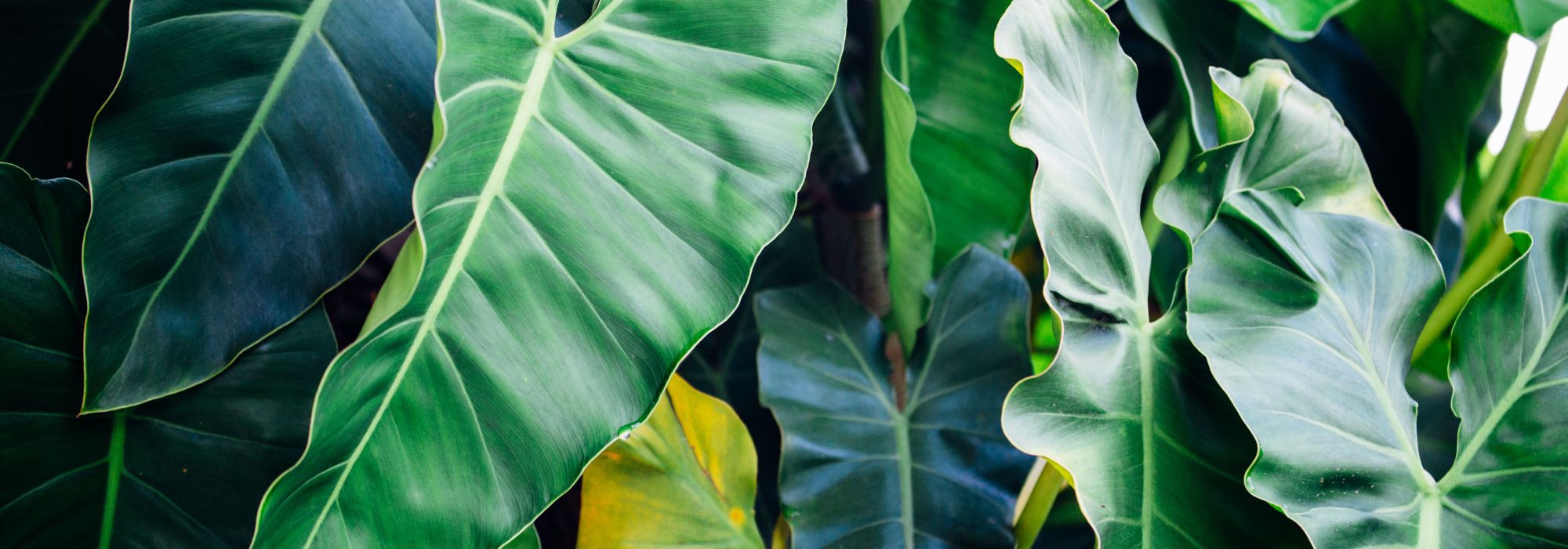
Xanthosoma: growing and care
Contents
Xanthosoma in a nutshell
- Xanthosoma, or malanga, is a tropical plant with spectacular foliage, ideal in bright indoor locations away from direct sunlight.
- It grows from a fleshy rootstock, in a rich, well-drained, slightly moist substrate.
- Good ambient humidity is essential to prevent drying out and parasitic pests.
- Propagation of elephant ear is by division of the rootstock in spring, when repotting.
- As décor, it is happy in a simple, natural pot as centrepiece of a plant display.
A word from our expert
Xanthosoma, often known as malanga, macabo or elephant ear, is a tropical plant with spectacular foliage, native to the humid forests of Central and South America. Belonging to the Araceae family, this genus seduces with its large sagittate or hastate leaves, borne on long arched petioles, which give the plant an exotic, imposing appearance. It grows from a fleshy underground rootstock, sometimes tuberised, which serves as its nutrient reserve and the starting point for propagation.
Indoors, Xanthosoma settles in a bright spot, but without direct sun, sheltered from draughts and in a warm, humid atmosphere, close to conditions of its natural habitat. It prefers a rich, well-draining substrate, kept slightly moist during the growing season, and drier in winter.
Propagation is easily achieved by dividing the rootstock in spring, during repotting. Not very susceptible to disease if watering is well controlled, malanga can, however, attract mites or scale insects if the air is too dry. Apart from watering, care is limited to regular cleaning of the foliage and removal of damaged leaves.
For décor, elephant ear naturally fits into an interior with tropical, bohemian or minimalist style, where its graphic foliage becomes a decorative element in its own right. Placed in a large terracotta or raw ceramic pot, Xanthosoma creates a vibrant, green atmosphere, while bringing freshness and verticality to the space. Although unsuitable for a closed terrarium, it can occasionally be grown in an open terrarium while juvenile, before becoming the centrepiece of a bright living room.

Resembling Alocasia or Colocasia, Xanthosma shares their botanical family.
Botany and description
Botanical data
- Latin name Xanthosoma sp.
- Family Araceae
- Common name Elephant ear, Macabo, Malanga
- Flowering summer and autumn
- Height 60 to 250 cm
- Exposure bright, without direct sunlight
- Soil type rich, well-draining potting compost
- Hardiness generally not hardy
Belonging to family Araceae, like Arum, Alocasia or philodendrons, the genus Xanthosoma groups together ornamental-leaved plants especially prized for their imposing habit and exotic appearance. Name Xanthosoma comes from Greek xanthos (“yellow”) and soma (“body”), referring to yellowish colouring of some underground parts, notably rootstock or tubercle, which are sometimes edible.
In French, these plants are sometimes called “oreille d’éléphant”, “macabo” or “malanga”, although those names are also used for related genera such as Colocasia or Alocasia. Their spectacular foliage, often sagittate or arrow-shaped, with well-marked veins, makes them highly sought-after ornamental plants.
In their natural habitat, Xanthosoma grow in humid tropical forests of Central and South America, from Mexico to the Amazon basin, where they settle in partial shade, in rich, cool but well-draining soil. These conditions promote rapid development of often luxuriant foliage, which captures dappled light of tropical understorey.
This ability to thrive under indirect light, combined with their high decorative value, explains why Xanthosoma have become popular houseplants, especially in bright interiors without direct sunlight. Care is relatively simple provided their requirements for warmth and humidity are met, making them accessible to enthusiasts of exotic potted plants.
Among most cultivated species, Xanthosoma sagittifolium is widely grown for food uses in tropical areas, but also for its graphic foliage. Other varieties such as Xanthosoma lindenii, notable for very contrasting veins on deep green background, or Xanthosoma atrovirens, often sold under trade name ‘Albo-marginata’, attract with their ornamental qualities indoors.
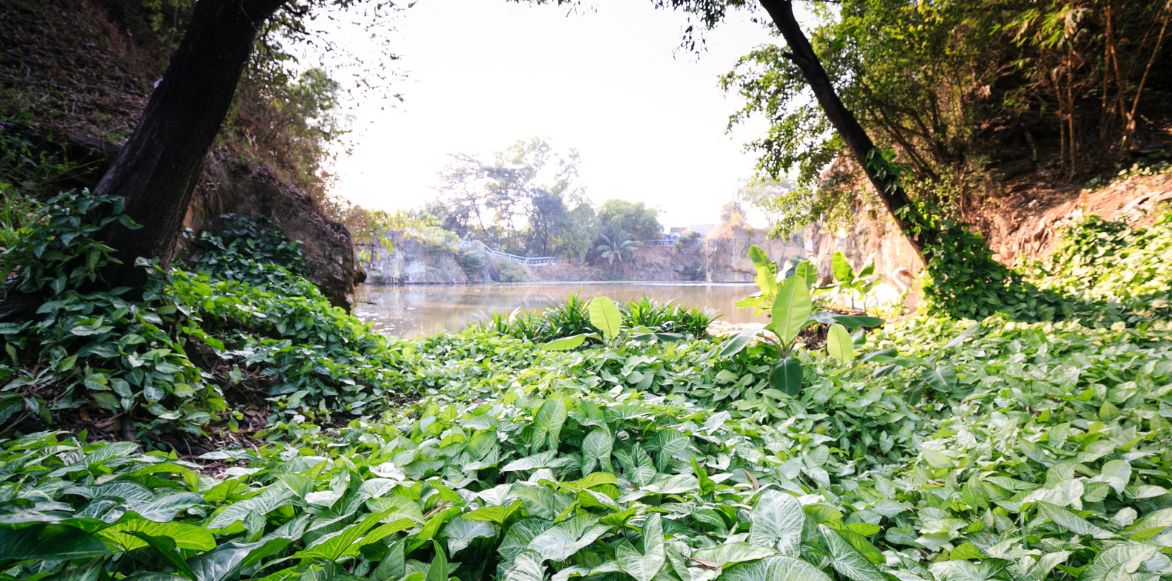
Xanthosoma favours warm, humid environments of Mexican forest.
Description of genus Xanthosoma
Xanthosoma is distinguished by a spectacular, typically tropical morphology, built around exuberant vegetative vigour, without true lignification. It develops neither trunk nor branches proper: this herbaceous plant grows from a fleshy underground rootstock, often partially buried, sometimes swollen into a tubercle in species such as Xanthosoma sagittifolium, where it serves as reserve of nutrients and water. From this rootstock arise directly petioles and leaves, in a more or less spreading rosette habit, giving plant appearance of a dense, erect clump.
Root system is fasciculate, moderately deep and very active in rich, cool, well-draining soils. In young plant, thick white roots anchor firmly in substrate, contributing to stability despite large aerial volume plant can reach.
No branching is visible at surface, because plant does not form secondary stem. It is the long petioles, often strongly arched, that support the large leaves and give impression of an arborescent habit. These petioles can exceed one metre in length and originate at base of rootstock. In Xanthosoma mafaffa, for example, petioles are robust, sometimes tinged purple or glaucous green, depending on cultivar.
Foliage is main attraction of genus. Leaves are generally sagittate to hastate, sometimes very deeply lobed at base, and show very pronounced veins. In Xanthosoma lindenii, they take on a deep green highlighted by cream-white veins forming a striking geometric network, while in Xanthosoma atrovirens, the glossy, uniformly dark green leaves offer a more restrained but equally graphic effect. Lamina, sometimes flexible, sometimes stiff depending on species, can measure up to 60 or 70 cm long, giving plant an imposing presence in living spaces.
Flowering remains inconspicuous, although in line with Araceae pattern, with an inflorescence composed of spathe and spadix. It is rarely seen indoors, as it requires constant heat and high humidity. When it occurs, spathe is usually whitish to greenish, discreet among foliage, and spadix contains male and female flowers, separated on same axis. Fruit is even rarer at our latitudes: under optimal conditions flowering can be followed by formation of small fleshy berries containing several seeds, but most cultivated Xanthosoma are never propagated sexually in cultivation, gardeners preferring division of rootstock.
Overall habit of Xanthosoma, with long erect or trailing leaves, stout base and luxuriant foliage, evokes that of Alocasia, but with a softer texture and greater tolerance to dappled light. It is a plant that asserts its silhouette while bringing a sense of tropical freshness, even in a confined space.
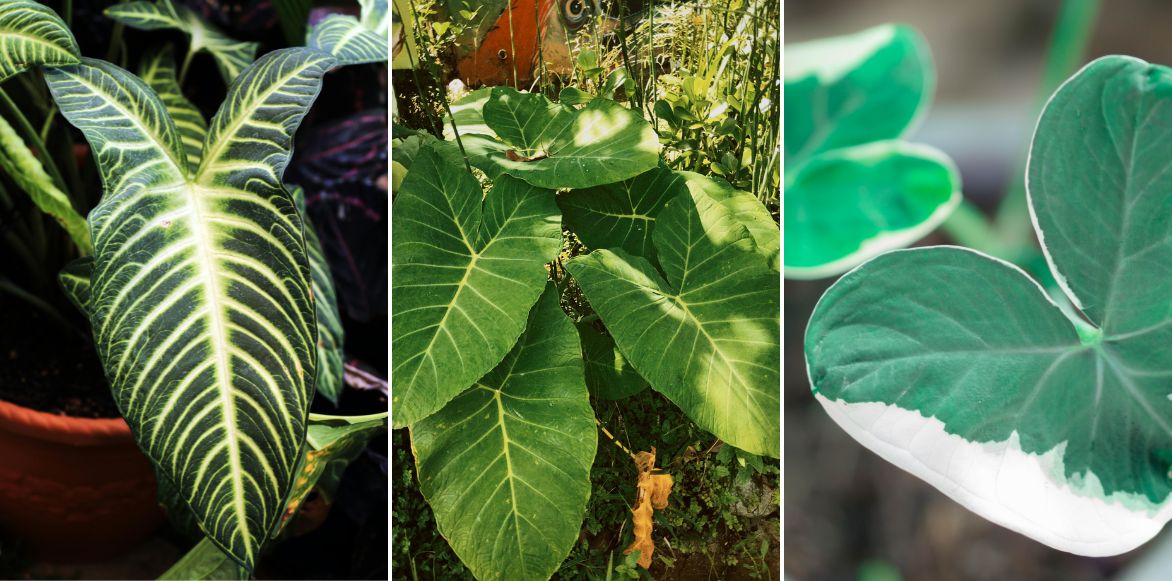
Choice is wide among different varieties of Xanthosoma.
Read also
Colocasia: planting, growing and careBest species and varieties
Potting Xanthosoma: when, where and how to ensure successful establishment in a pot
When to plant?
Potting a Xanthosoma is ideally carried out in spring, when temperatures stabilise above 18 °C. This period favours resumption of growth after any winter dormancy. Indoors, potting can be done at any time of year, provided plant is given stable and sufficiently warm conditions.
Which substrate to grow a Xanthosoma in?
For Xanthosoma to thrive, provide a rich, light and well-drained substrate. A mix made of half universal potting compost or potting compost for green plants, one quarter mature compost and one quarter perlite or pumice works very well. Adding organic matter improves water retention without making substrate waterlogged, which is essential to preserve fleshy roots and underground parts sensitive to stagnant moisture.
Where to place pot of your Elephant’s ear?
Light should mimic tropical understorey conditions: bright but filtered, with no direct sun. An east- or west-facing room, or a spot a few metres from a south-facing window with a sheer curtain, allows plant to develop harmoniously without leaf scorch. Ideal temperature is between 20 and 28 °C, with high ambient humidity, above 60%, essential to prevent foliage drying at the tips. Using a humidifier or grouping large-leaved plants can improve local humidity.
Which pot to choose?
Pot should be chosen with care. It should be proportionate to root volume, not too small so as not to restrict growth, nor too large to avoid excess moisture. A 22–25 cm diameter container is sufficient for a young specimen, to be adjusted according to development of the rootstock. Terracotta pots work well, as they allow better aeration of substrate, but thick plastic pots retain moisture better, which can be an advantage in dry atmospheres.
Planting a Xanthosoma
Planting follows a few simple but important steps:
- After placing a drainage layer at the bottom of the pot (clay balls or pottery shards), install substrate without compacting it excessively.
- Position the rootstock or the young plant’s rootball so that the bases of the petioles are level with the substrate surface.
- Fill in around with the prepared mix.
- Then firm lightly and water moderately but regularly to moisten the whole.
Good to know: repotting becomes necessary every two to three years, or as soon as roots fill the pot. It is then sensible to choose a slightly larger container, renew depleted substrate and check condition of the rootstock. This operation is preferably carried out in spring, taking care to thoroughly moisten the rootball before and after handling to avoid water stress.
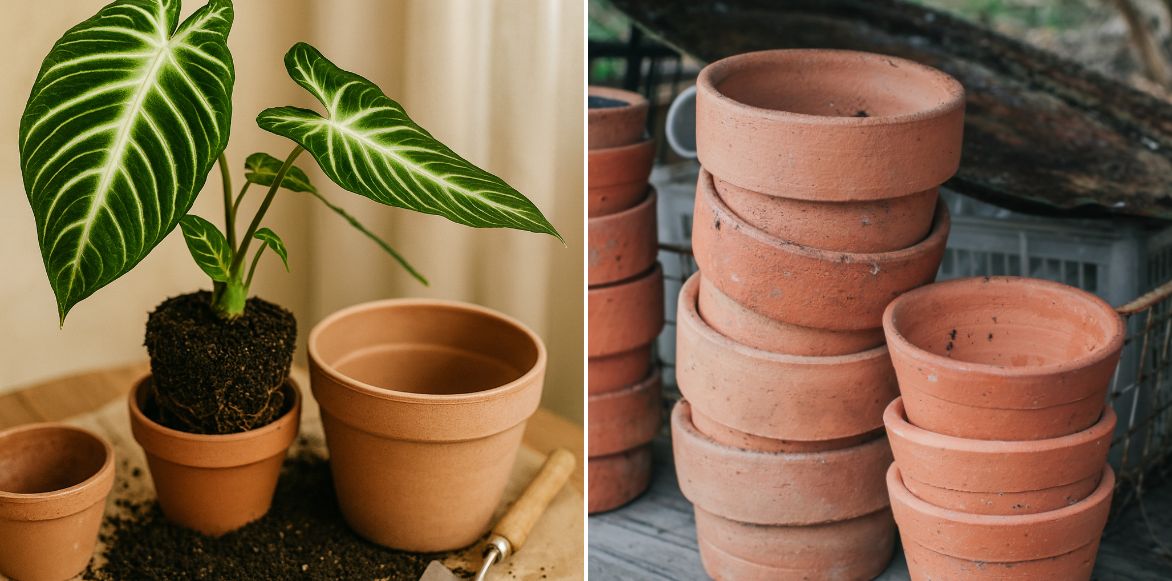
Like many houseplants, Xanthosoma likes to be a little cramped. (Image enhanced by AI)
Growing and caring for Xanthosoma indoors
Xanthosoma thrives when its tropical vegetative cycle is respected, characterised by rapid growth in warm periods and a more or less marked resting phase in winter. Indoor cultivation is achievable, provided a few essential care steps are followed.
Watering Xanthosoma
Watering elephant ear is the most delicate balancing act. During the growing season, plant needs a potting mix kept moist but never waterlogged. Water when the top two or three centimetres of soil are dry to the touch, allowing water to drain freely through the drainage holes. In winter, frequency is markedly reduced, Xanthosoma entering semi-dormancy. Too much water during the rest period leads to risk of root rot and rootstock rot. Overwatering often shows as yellowing foliage, or even a sudden collapse of the clump.
Fertilising a potted macabo
Regular fertilisation supports spring and summer growth. You can apply a liquid houseplant fertiliser approximately every 15 days, or choose an organic slow-release granular fertiliser at the start of spring. A nitrogen-rich feed promotes foliage but should remain balanced so as not to weaken plant in the long term. As autumn approaches, space out or suspend feeds to respect the vegetative rest period.
Cleaning the plant
Xanthosoma does not require pruning as such, but regular removal of damaged or yellowed leaves is recommended. Cut them at the base of the petiole with a clean tool, avoiding injury to healthy tissue. This prevents disease and encourages the emergence of new leaves. In overly dry environments, some leaves may partly dry out: it is preferable to cut only the damaged portion so as not to overly unbalance plant.
Additional precautions
In heated indoor environments, dry air favours the appearance of mites or scale insects, especially if plant is weakened by excess heat or lack of humidity. A mister, a short stem of bulb filled with moist clay balls or a humidifier help maintain good ambient humidity. It is also useful to turn the pot regularly so plant keeps an even shape, as it tends to incline towards light.
Good to know! : take care with latex contained in freshly cut petioles or leaves. In some species, it can irritate skin or mucous membranes. It is therefore recommended to handle plant with gloves during pruning or repotting, particularly if dividing a rootstock.
Parasitic pests and diseases of Xanthosoma: preventing and identifying problems
Like many tropical houseplants, Xanthosoma, elephant ear or malanga, can be prone to various stresses caused by unsuitable growing conditions. These imbalances favour the emergence of common pests and fungal diseases, although this plant remains generally robust if humidity, warmth and light are well managed.
Pests
The main enemy of Xanthosoma indoors remains dry air, often responsible for proliferation of red spider mites. These tiny pests spin fine webs under leaves and cause progressive yellowing of the lamina, accompanied by discoloured spots. They are usually visible to the eye when examining the undersides of large sagittate leaves. Relative humidity above 60%, regular cleaning of foliage with clear water and, if necessary, spraying with diluted black soap help limit their development.
Mealybugs, recognisable by their cottony white clusters on the petioles or in the axil of leaves, can also settle on a weakened young plant of Xanthosoma. They slow growth, weaken the plant by sucking sap and leave a sticky honeydew that promotes development of black sooty mould. It is advisable to intervene early, removing infestations manually with a cotton swab soaked in alcohol, then applying a repeat natural treatment if necessary.
Diseases
With overwatering or stagnant water in the saucer, fungal diseases can develop rapidly, notably rot of the collar or of the rootstock. Xanthosoma, like many Araceae, is particularly susceptible to this type of pathology, which manifests as sudden collapse of the clump, limp leaves and blackening at the base. It then becomes urgent to lift the plant, remove affected tissues, repot into a healthy, well-drained substrate and reduce waterings until recovery.
Chlorosis of foliage can also appear if substrate is depleted or if plant lacks light. Leaves then lose deep green colour and become pale, sometimes marbled with yellow. Move pot to a brighter spot (without direct sun) and resume gentle feeding.
Overall, well-established malanga in a warm, humid environment is seldom subject to major attacks. It is often an imbalanced culture, poorly sited or poorly watered, that triggers infestations or root-related disorders. Regular monitoring of foliage, combined with good cultural practices, generally suffices to prevent most problems.
Propagating Xanthosoma: rootstock division
Propagation of Xanthosoma is mainly achieved by division of rootstock, a simple, reliable method perfectly suited to pot culture. Reproduction by sowing is rarely practised indoors, flowering being infrequent at our latitudes and seed viability uncertain.
Division takes place in spring, when plant naturally resumes growth. This period limits risk of rot associated with damp conditions and promotes rapid rooting of new sections. Repotting is often used as an opportunity to carry out this operation.
Over time, Xanthosoma rootstock develops into a fleshy underground mass from which several petioles emerge. By carefully lifting it, secondary growth points are easily seen, sometimes already bearing young buds or roots. Using a clean, sharp knife, the rootstock can then be cut into several fragments, each containing at least one visible bud or an emerging leaf. Wounds should be left exposed to air for a few hours to dry, or dusted with powdered charcoal to prevent infection.
Each section is then replanted in a pot of suitable size, filled with light, free-draining substrate, kept slightly moist but never waterlogged. Ambient warmth (at least 22 °C) and good humidity favour re-establishment. Allow a few weeks to observe first shoots, especially if conditions are stable and bright without excessive direct sun.
This method not only reproduces the parent plant faithfully, but also rejuvenates an Xanthosoma that has become too bulky or bare at the base. However, avoid propagating a diseased or weakened specimen, as fragments taken from an unhealthy rootstock are unlikely to establish successfully.
How to showcase a Xanthosoma in interior decoration?
With its spectacular foliage, sometimes veined with white, sometimes a deep glossy green, Xanthosoma naturally stands out as an exceptional plant indoors where it can become sizeable. It prefers bright, well-ventilated spaces without draughts or harsh direct light, making it perfectly suited to spacious living areas such as a living room, a temperate conservatory or an east- or west-facing office.
In an urban jungle atmosphere, alongside other large-leaved plants such as Monstera, Philodendron or Calathea, Xanthosoma strengthens a lush, tropical ambience. Its vertical or semi-spreading habit allows it to create a plant focal point, whether a classic green-foliage form or a more graphic cultivar such as Xanthosoma lindenii with its ivory veins.
It pairs well with raw or natural furniture, in bohemian, wabi-sabi or greenery-filled contemporary interiors. A pot in raw terracotta, matt ceramic or mineral concrete gives it an elegant layer while showcasing its textures. It can also be placed in a decorative outer pot with black-and-white geometric motifs, or on a stand, to emphasise the arched structure of its leaves. Elevated pots, notably in black metal or light wood, help to visually lighten its bulk.
Thanks to its sculptural appearance, Xanthosoma also finds a place in minimalist décors, where it breaks the strictness of lines with its natural luxuriance. In this case, a simple pot with clean lines, tone-on-tone with the walls or the soil, allows it to be showcased without decorative overload. It is important, in all cases, to give it visual space around it to avoid a cramped effect and let its foliage express itself fully.
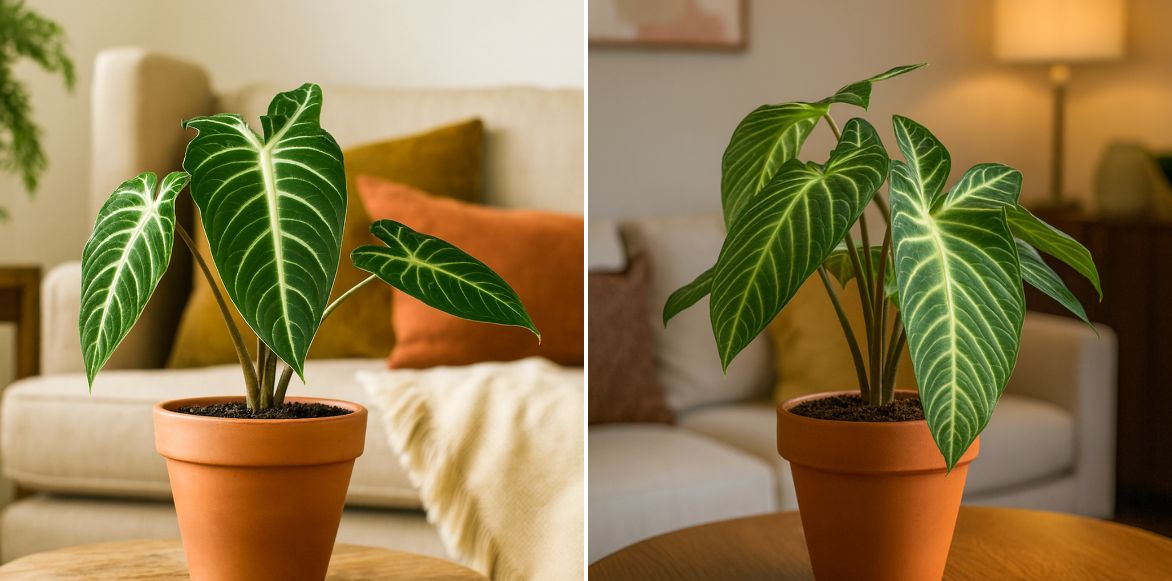
Xanthosoma fits into all interior styles.
Useful resources
- Discover our range of indoor green and flowering plants to bring exoticism and elegance to your home.
- Our selection of books on indoor plants.
- Subscribe!
- Contents
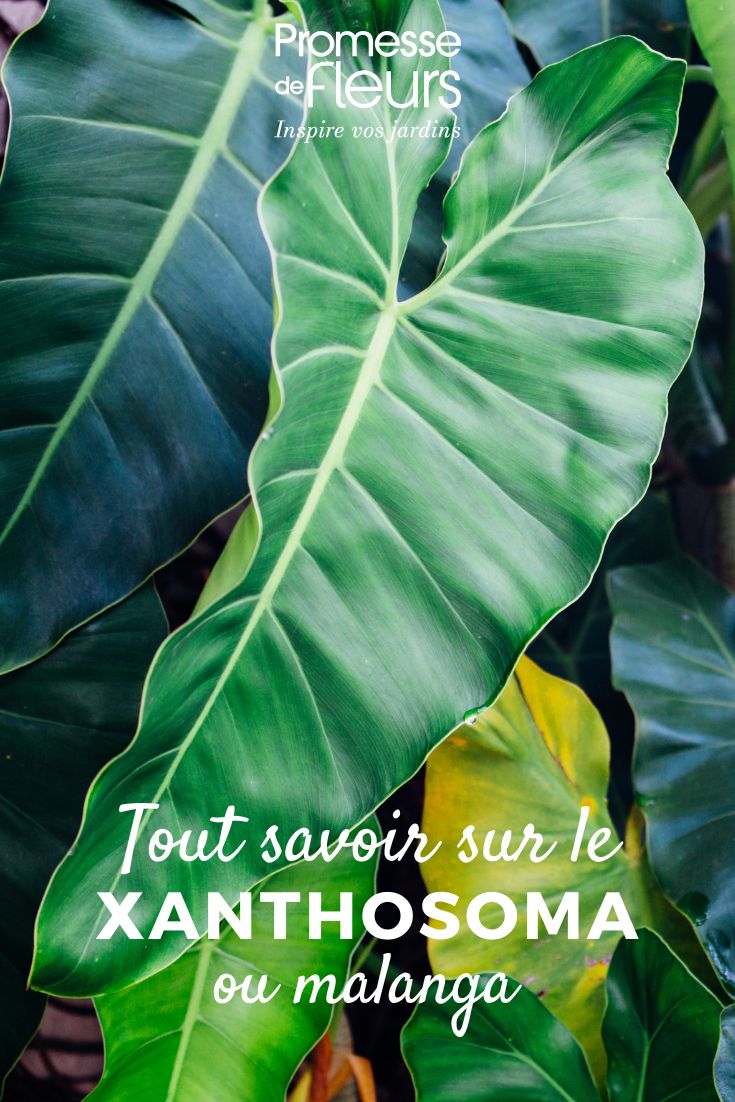






























Comments